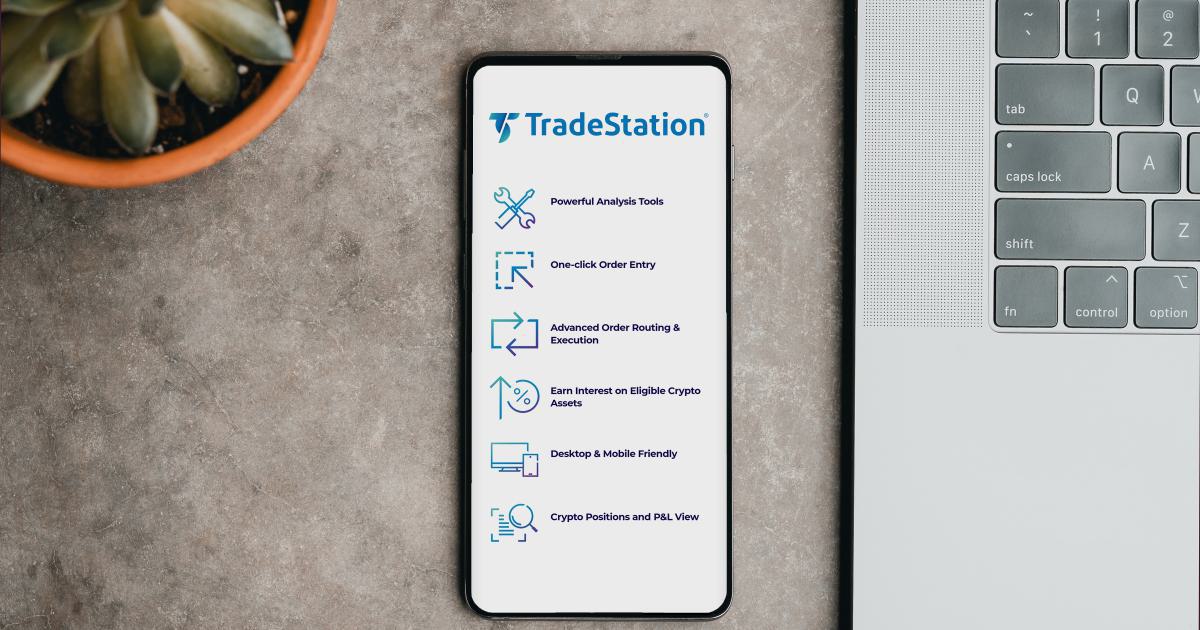5 Steps to Conquer Fear of Failure in Trading

Trading can be both an exciting opportunity and a challenging venture, especially when the fear of failure in trading looms large. Whether you are new to the market or an experienced trader, this intrinsic fear can disrupt decision-making, prevent the execution of sound strategies, and impair overall performance. This detailed guide dives into five actionable steps to help you overcome that fear, rebuild confidence, and embrace a more successful trading mindset. By understanding the underlying causes and applying practical strategies, you can turn apprehension into a powerful driver for growth and achievement.
In this comprehensive article, we will explore each step in depth:
- Understanding the roots of your fear
- Creating actionable and robust strategies
- Embracing continuous learning and self-improvement
- Mastering risk management techniques, and
- Cultivating the discipline required for long-term success.
Each section is enriched with real-world examples, actionable solutions, and case studies that demonstrate how traders have successfully conquered their fears. Let’s embark on this journey together and equip you with the tools needed to transform your trading experience.
Step 1: Understand the Root Causes of Fear
Fear is a natural emotion, and in trading, it is often the byproduct of past failures, negative self-talk, or even overwhelming market volatility. Recognizing why you feel fearful is the first, critical step toward overcoming it.
Recognizing Personal Triggers
The experience of fear in trading typically stems from personal experiences. This might include a history of significant financial loss or observing others’ failures. Reflect on past trades and consider whether your fear is isolated or part of a pattern influenced by specific triggers such as sudden market downturns or unexpected news events.
Real-world case study: Consider a trader who experienced a substantial loss during a turbulent market period. Over time, this experience led to hesitation and paralysis at the mere mention of volatility, regardless of promising market signals. Recognizing that this fear was linked to a specific incident allowed the trader to engage in cognitive behavioral therapy (CBT) and reframe thoughts, gradually reducing fearful responses.
Psychological Foundations of Fear in Trading
Many traders exhibit signs of cognitive bias, including the “loss aversion” mindset, where the pain of a potential loss outweighs that of a gain. Even when logical analysis spots an opportunity, this instinctual bias can drive hesitant behavior. Studies in behavioral finance suggest that the emotional aspect of trading is just as important as the analytical skills that drive methodical decision-making.
It is beneficial to journal your trading experiences. Recording thoughts, triggers, and emotional responses not only provides clarity but also helps in identifying recurring patterns. Use self-reflection techniques by asking vital questions after each trade:
- What was the immediate emotional reaction?
- What thoughts passed through your mind?
- How might these feelings be connected to past experiences?
The Role of Past Experiences and External Influences
External influences such as stories of market crashes and sensationalist media coverage exacerbate fear. Awareness of these influences can help you place your concerns in context. Instead of allowing past events to dictate your future decisions, concentrate on current data and trends.
To practically address and analyze your triggers:
Set aside time after trading sessions to reflect.
Identify and record specific thoughts that hinder your decision-making.
Seek professional advice or peer support if past traumatic experiences still haunt your trading decisions.
By understanding these aspects, you begin to dismantle the irrational underpinnings of your fear, paving the way for a more confident approach.

Step 2: Develop a Robust Trading Plan
A well-structured trading plan not only sets out your trading goals and strategy but also builds confidence by providing a clear roadmap during turbulent market conditions. It serves as your anchor during times when fear threatens to overshadow rational decision-making.
Components of an Effective Trading Plan
An effective trading plan should include:
- Clear objectives and profit targets.
- Detailed entry and exit strategies.
- Pre-determined stop-loss and take-profit levels.
- A strict risk management protocol.
- Periodic review and adjustment protocols.
Each component addresses different aspects of trading, ensuring that you remain systematic and supportive, even when fear starts creeping in.
2.1 Setting Realistic Goals
A common mistake many traders make is setting overly ambitious profit targets. While high aspirations are commendable, they can often lead to overtrading and increased stress. Instead, establish goals that are both challenging and realistic. Consider historical data or consult with seasoned traders to benchmark these targets appropriately.
For example, if your trading history shows moderate gains, setting a goal that doubles your monthly income might be unrealistic. Conversely, incremental targets provide measurable and achievable milestones that boost confidence over time.
2.2 Establishing Entry and Exit Strategies
Determining the precise moment to enter or exit a trade reduces the emotional burden associated with making last-minute decisions. Create strict guidelines:
- Use technical indicators to determine entry points.
- Leverage stop-loss orders to minimize losses.
- Set take-profit levels to protect gains.
These predetermined guidelines will help you remain disciplined and avoid emotional breaches during volatile moments.
2.3 Creating a rulebook
The power of a trading plan lies within its strict adherence. Write down your rules and review them consistently. Over time, you might need to adapt the plan depending on market conditions and personal growth. This documented roadmap ultimately becomes a reliable reference, especially when the market’s unpredictability triggers fear.
2.4 Backtesting and Simulation
Before fully engaging with the market, backtest your trading strategies on historical market data. Simulated trading environments can add to your confidence and provide the reassurance that your method can work in diverse market scenarios. This exercise also acts as a validation step that can alleviate the fear of failure when real money is at stake.
The Psychological Impact of a Trading Plan
By having a concrete plan, you reclaim control over the trading process from the unpredictable swings of emotion and market volatility. The structured approach helps mitigate anxiety as every potential scenario, including worst-case outcomes, has been preemptively considered and addressed. Viewing your trading plan as a dynamic, supportive tool provides a sense of discipline and reliability, reducing hesitation and the overwhelming fear of failure in trading.
Implementing a trading plan requires consistent application. Celebrate small successes as you adhere to your guidelines, even if outcomes vary. The confidence that develops will compound over time and increase your overall trading competence.
Step 3: Embrace a Learning Mindset and Continuous Improvement
A learning mindset transforms fear into an opportunity for growth. Instead of dreading failure, consider it an essential part of the learning curve—a necessary stepping stone toward better trading tactics and refined strategies.
The Value of Education in Trading
Investing in education by reading reputable trading books, attending webinars, or participating in online courses can broaden your perspective. Many traders find that continuous education not only enhances skill levels but also significantly reduces anxiety. Learning new strategies empowers you to make informed decisions, acting as a counterbalance to the fear of failure in trading.
3.1 Seeking Mentorship and Peer Support
Often, trading can seem like a solitary endeavor. However, joining trading communities or finding a mentor can help you share experiences, gather practical advice, and validate your strategies. Peer interactions might reveal new perspectives on risk management and support practices that can expedite overcoming fear.
A prime example is a trading forum where members discuss both successes and setbacks. By learning from others’ experiences, you understand that setbacks are common and surmountable.
3.2 The Role of Self-Reflection and Journaling
Keep a detailed trading journal. Record not only your market analytics but also your emotional states and decision-making processes. Over time, you will notice trends and patterns that can guide further refinement of your strategies. This introspective practice forms the foundation for continuous improvement and self-awareness, which is critical when battling the fear of failure in trading.
Embracing Mistakes as Learning Opportunities
Every mistake is a lesson in disguise. Reframe failures as valuable feedback rather than personal shortcomings. For instance, a trade that results in a loss can highlight a flaw in your strategy or a misinterpretation of market data. Analyzing these failures methodically will allow you to refine your approach and bolster your resilience.
Use the following steps to extract value from mistakes:
Identify the mistake and its cause.
Document the lesson learned.
Adjust your strategy to avoid similar pitfalls in the future.
Seek feedback from mentors or peers to gain additional perspectives.
This positive, growth-focused mindset will ultimately reduce the fear of failure in trading, transforming setbacks into stepping stones on your journey toward success.
Cultivating Curiosity and Experimentation
A vital aspect of continuous improvement in trading is cultivating curiosity. Experiment with small, controlled trading experiments to test new theories and approaches. Remember, each new lesson contributes to the overall body of knowledge you possess—a resource that grows with experience and perseverance.
Embracing experimentation can lead to innovations in your trading strategies. While some experiments may not yield immediate success, they often provide insight into market behavior and risk management. Remember, the most successful traders are not those who never fail, but those who learn quickly from every mistake.
By adopting a learning mindset, you convert each challenge into an opportunity to become a more seasoned and confident trader. This is a critical shift in perspective aimed at demystifying the fear of failure in trading and replacing it with a relentless pursuit of improvement.

Step 4: Implement Effective Risk Management Strategies
Fear in trading often intensifies with uncertainty in risk. One of the most powerful ways to soothe that apprehension is to implement comprehensive risk management strategies. Effective risk management establishes control over the unknown, ensuring that losses remain manageable.
Understanding Risk-Reward Ratios
A key concept in risk management is the risk-reward ratio, which helps quantify the potential loss against the potential gain of each trade. By carefully calculating this ratio, you can make informed decisions that reduce the threat of catastrophic losses. A common rule among professional traders is to aim for a risk-reward ratio of at least 1:2 or higher—meaning that for every unit of potential loss, you target at least two units of gain.
For example, if you risk $100 on a trade, strive to achieve a target profit of at least $200. This approach not only limits your downside potential but also instills trust in your strategy, which is a crucial antidote to the fear of failure in trading.
Establishing Stop-Loss and Take-Profit Mechanisms
Practical risk management hinges on the consistent application of stop-loss orders. These pre-set limits ensure that a trade is automatically closed when adverse market conditions occur. Conversely, take-profit levels secure gains and prevent greed-driven decisions that may expose you to unnecessary risk.
Implementing these mechanisms provides psychological comfort. When you know that every trade has pre-determined exit points, you are less likely to succumb to panic or impulsive corrections during market volatility. The financial security that comes with these safeguards can dramatically reduce your anxiety and encourage disciplined trading behavior.
Diversification as a Risk Mitigation Strategy
Diversification is a well-known strategy to spread risk across different assets or markets. By not putting all your capital in one asset, you shield your portfolio from the impact of a single loss. Even when one segment experiences downturns, gains in another area can balance the overall performance. This approach is particularly effective in mitigating long-term fears and offers a more stabilized trading experience.
Diversification can take various forms:
- Diversifying your asset classes (stocks, bonds, forex, etc.).
- Diversifying your trading strategies (swing trading, day trading, value investing).
- Diversifying through different market sectors.
Incorporating diversification into your risk management plan not only supports capital preservation but also gradually builds the confidence needed to face fear head-on.
Utilizing Technology for Risk Management
Modern trading platforms offer tools that facilitate effective risk management. Automated alerts, real-time analytics, and portfolio trackers all play essential roles in constantly monitoring your positions. These digital solutions enable you to respond swiftly to market conditions without letting fear dictate your actions.
For example, many platforms integrate algorithmic trading systems that execute trades based on predefined criteria. These systems can help ensure that your risk management strategies are strictly followed, even when emotions threaten to take over.
Combining robust risk management with a well-developed trading plan creates an environment in which fear is mitigated through structure and technology. The more controlled your trading surroundings, the less room there is for fear to creep in.

Step 5: Cultivate Patience and Discipline for Long-Term Success
Achieving long-term trading success requires far more than just technical skills or market analysis—it calls for discipline and unwavering patience. Once you have implemented the strategies to manage your fear, the next step is to foster the habits that sustain positive behavior over time.
The Importance of Patience in Trading
Patience is crucial in trading. Markets do not move in predictable patterns, and the right trading opportunities may take time to develop. Instead of succumbing to impulsive moves out of fear or excitement, practice waiting for your strategies to play out. A patient trader is less prone to rash decisions and more likely to follow their plan, resulting in fewer mistakes and more consistent profits.
Think about the well-known saying: "Slow and steady wins the race." In trading, disciplined waiting allows you to verify that your indicators and market signals are aligned. A forced trade can create unnecessary risks, whereas a patient approach enhances the probability of favorable outcomes.
Techniques to Enhance Discipline
Discipline in trading is similar to mastering any other skill; it requires continuous practice. Here are some proven techniques:
- Adhere strictly to your trading plan without deviation.
- Create a daily routine that incorporates market analysis, review of your journal, and strategy evaluation.
- Practice mindfulness and stress-reduction techniques such as meditation or deep breathing to keep emotional responses in check.
- Set aside specific times for trading so that you’re not constantly swayed by market noise during off-hours.
Building Mental Resilience
Mental resilience is the capacity to handle setbacks without losing focus or confidence. Approaching each trade with the mindset that every outcome—positive or not—is a learning experience will help build psychological toughness. Techniques like visualization can be highly effective. Visualize success and maintain a confident image of yourself executing trades calmly and wisely even amid turbulence.
Additionally, consider setting performance reviews on a weekly or monthly basis. Assess both your profitable trades and your losses as opportunities for deeper learning. Capture the context of every trade, including the emotional state you experienced while executing it. Over time, you’ll recognize that even losses contribute to your growth as a trader.
Long-Term Mindset Strategies
To thrive in trading, integrate long-term strategies into your daily routine:
Define your career vision in trading and remind yourself of this vision regularly.
Understand that temporary setbacks are only minor detours in your broader journey.
Celebrate small victories and incremental improvements. Over time, these compound into significant successes.
Discuss your trading experiences with a mentor or trusted peer to gain external validation and insight.
Cultivating patience and discipline is pivotal because trading success is rarely an overnight phenomenon. It’s the outcome of relentless practice, continuous learning, and persistent adherence to your established strategy—even through turbulent times.
Throughout this journey, remember that mastering the fear of failure in trading is an ongoing process. Each step you take, from understanding your personal roots of fear to cultivating long-term discipline, is a milestone on the path to becoming a resilient and successful trader.

Conclusion
Overcoming the fear of failure in trading is neither simple nor immediate. It requires self-awareness, dedication, and implementing structured techniques that transform even the most daunting market conditions into manageable challenges. By understanding the root causes of your fear, developing a robust trading plan, embracing continuous education, applying effective risk management, and cultivating patience and discipline, you lay down the foundation for long-term success.
Reflect on your journey regularly: acknowledge your progress, learn from your setbacks, and revise your strategies accordingly. With each incremental improvement, your confidence will grow, and the fear that once held you back will be replaced by a clear, goal-oriented mindset. Trading is as much about personal development as it is about market insight. Embrace the learning process, and let your experience be your guide.
Remember, every expert trader was once a beginner who faced similar fears. Today, armed with these five steps, you’re well-prepared to challenge and conquer the fear of failure in trading. Step forward with confidence, knowing that each trade is not just a potential financial gain, but also a step in your evolution as a skilled and resilient trader.
The markets are vast, and the opportunities limitless. Let not fear hold you back—embrace each challenge, transform setbacks into triumphs, and let your trading journey be a testament to your commitment, discipline, and continuous improvement.
Happy Trading!
Unlock Trading Potential with Automated Analysis
Tired of missing opportunities and making suboptimal trading decisions? TrendSpider's cutting-edge platform automates complex technical analysis, saving you time and reducing human error.
With multi-timeframe analysis, dynamic alerts, backtesting, and customizable charting, you'll gain a competitive edge in identifying trends and making informed trades across global markets.
Unleash the Power of Automated Trading Analysis
Are you struggling to keep up with the fast-paced trading world? TrendSpider empowers you with cutting-edge tools for optimal strategy execution.
Our automated technical analysis suite eliminates guesswork, backtests strategies, and delivers real-time alerts, saving you valuable time and effort.


